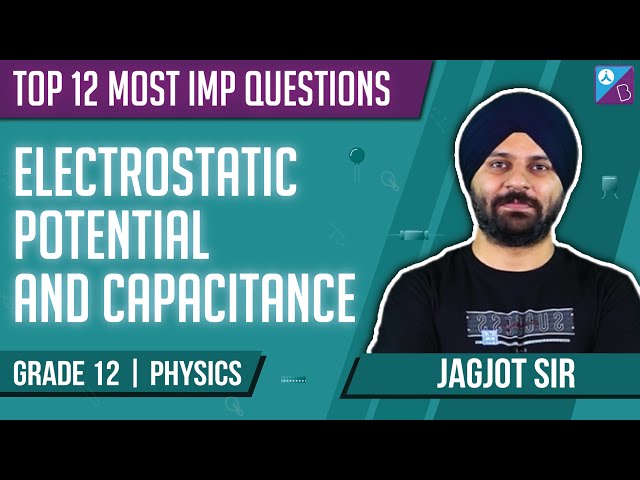Class 12 Physics Chapter 2 Electrostatic Potential and Capacitance MCQs are provided here with answers. These questions are designed as per the latest CBSE syllabus and NCERT curriculum. Solving these chapter-wise MCQs will help students to score good marks in the final exam. Electrostatic Potential and Capacitance Class 12 Physics MCQs are prepared for a better understanding of the concept. It allows students to test their knowledge and answering skills in the given time frame.
Download Chapter 2 Electrostatic Potential and Capacitance MCQs PDF by clicking on the button below.
Download PDF
MCQs on Class 12 Chapter 2 Electrostatic Potential and Capacitance
Check the multiple-choice questions for the 12th Class Physics Electrostatic Potential and Capacitance Chapter. Each MCQ will have four options here, out of which only one is correct. Students have to pick the correct option and check the answer provided here.
1. The process in which a region is made free from any electric field is known as _____________.
- Electrostatic forcing
- Electrostatic binding
- Electrostatic shielding
- None of the options
Answer: (c) Electrostatic shielding
Explanation: Electrostatic shielding is a phenomenon seen when a Faraday cage is used to block the effects of an electric field.
2. The formula for electrostatic potential is _____________.
- Electrostatic potential = Work done*charge
- Electrostatic potential = Work done/charge
- Electrostatic potential = Work done+charge
- Electrostatic potential = Work done-charge
Answer: (b) Electrostatic potential = Work done/charge
Explanation: The formula for electrostatic potential is Electrostatic potential = Work done/charge.
3. 1 Volt = _____________ style-type: lower-alpha;”>
Answer: (c) 1 Joule / 1 Coulomb
Explanation: 1 V = 1 Joule / 1 Coulomb
4. The work done in moving a unit positive test charge over a closed path in an electric field is _____________.
- Always 1
- Infinite
- Zero
- Negative
Answer: (c) Zero
Explanation: We say electrostatic forces are conservative in nature since the work done in moving a unit positive test charge over a closed path in an electric field is zero.
5. The electrostatic potential on the perpendicular bisector due to an electric dipole is _____________.
- Zero
- 1
- Infinite
- Negative
Answer: (a) Zero
Explanation: The electrostatic potential on the perpendicular bisector due to an electric dipole is zero.
6. A surface that has the same electrostatic potential at every point on it is known as _____________.
- Equal-potential surface
- Same potential surface
- Equi-magnitude surface
- Equipotential surface
Answer: (d) Equipotential surface
Explanation: Equipotential surface is a surface formed by the locus of all the points which are at the same potential. Equipotential surfaces do not intersect with each other and are closely spaced in the region of strong electric fields and vice-versa.
7. The work done against electrostatic force gets stored in which form of energy?
- Thermal energy
- Kinetic energy
- Potential energy
- Solar energy
Answer: (c) Potential energy
Explanation: The work done against electrostatic force gets stored in the form of potential energy.
8. Dielectrics are _____________
- Conducting substances
- Non-conducting substances
- Semi-conducting substances
- None of the option
Answer: (b) Non-conducting substances
Explanation: Dielectrics are non-conducting substances.
9. The electric potential inside a conducting sphere _____________
- is zero
- increases from centre to the surface
- decreases from centre to the surface
- remains constant from centre to the surface
Answer: (d) remains constant from centre to the surface.
Explanation: The electric potential inside a conducting sphere remains constant from centre to the surface.
10. The capacity of the parallel plate capacitor increases when
- area of the plate is decreased
- area of the plate is increased
- distance between the plates increases
- None of the option
Answer: (b) area of the plate is increased
Explanation: The capacity of the parallel plate capacitor increases when the area of the plate is increased.
Suggested Videos
JEE 2023 important questions about Electrostatic Potential and Capacitance.

Important JEE questions on electrostatic potential and capacitance
 s
s
Comments